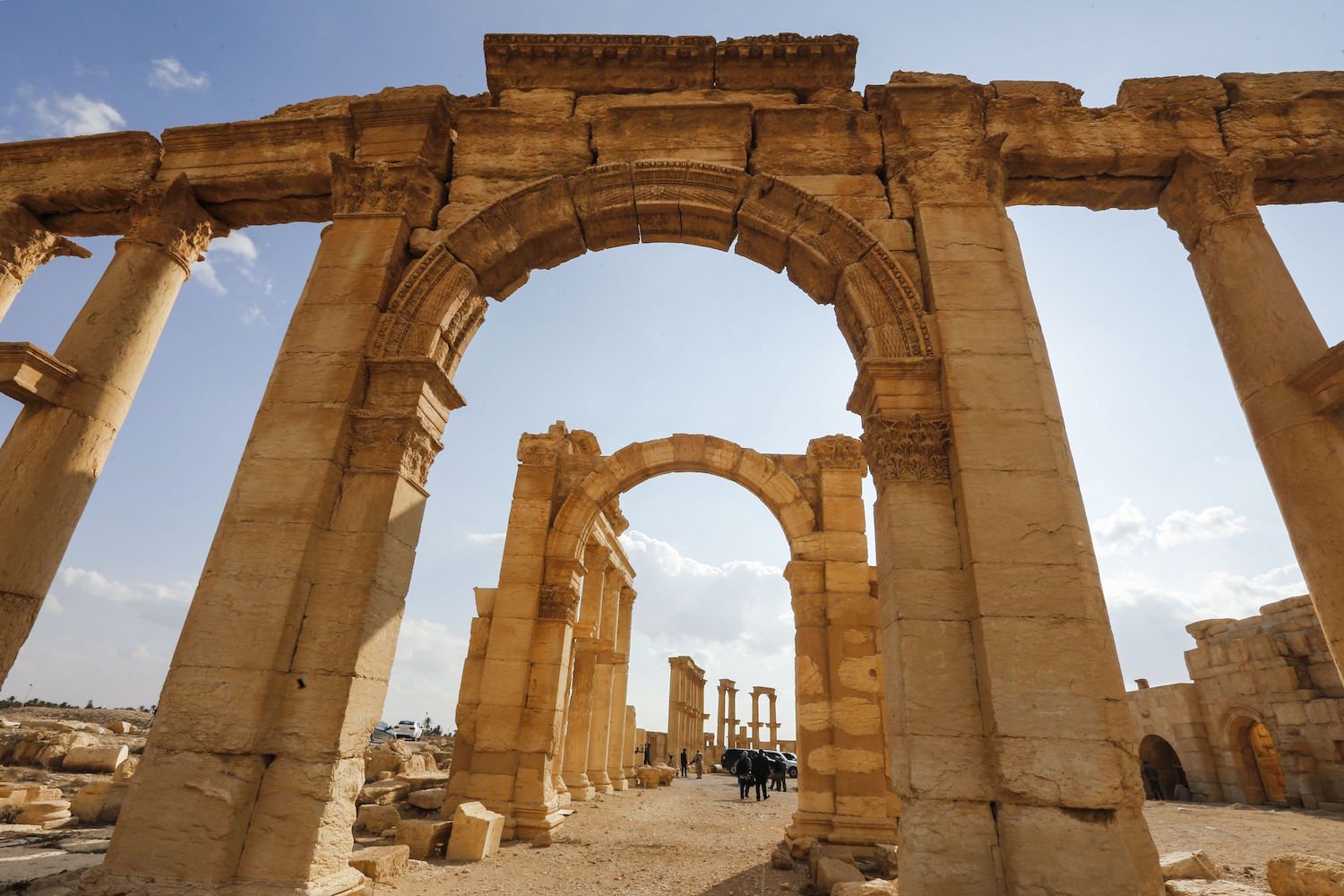
The ancient city of Palmyra, which has been badly damaged by ISIS, could reopen to tourists as early as next summer, the Syrian government has announced. The historic site, located in Syria’s Homs Governate province, was once among the country’s top attractions, with as many as 150,000 visitors a year.
“The authorities now have a project to repair all the damage caused to Palmyra’s Old City,” Talal Barazi, the provincial governor of Homs, told Sputnik News. “This is the world history and it belongs not only to Syria,” he added noting that UNESCO, Russia, Poland, and Italy are among the countries and institutions which have pledged to offer assistance in Syria’s efforts “to restore the artifacts and historical value of Palmyra.”
Once called the “Pearl of the desert,” Palmyra, famous for its well-preserved Greco-Roman ruins, has been a UNESCO World Heritage Site since 1980, renowned for its unique blend of Greek, Roman, Persian, and Islamic cultures. In 2013, following the 2011 outbreak of the Syrian Civil War and the rise of ISIS, it was added to the list of endangered world heritage sites.
Since that time, ISIS has twice occupied Palmyra, first beginning in May 2015. The government expelled the terrorist group from the ancient city in March 2016, only to lose it again in December of that year. After two years of protracted battles, the Syrian Army retook the site for good in March of 2017—but not before the terrorist group had destroyed some of the city’s most historic treasures.
A photographer holding a picture of Palmyra’s Temple of Bel in front of the remains of the historic temple after it was destroyed by ISIS jihadists in September 2015. Syrian forces recaptured the ancient city in March 2016, only to lose it again in December that year, after this photo was taken. Now firmly under the government’s control, Palmyra is undergoing restoration in the hopes of once again welcoming tourists. Photo by Joseph Eid/AFP/Getty Images.
While it controlled the historic site, ISIS publicly beheaded Palmyra’s 82-year-old head of antiquities, Khalid al-As’ad, when he refused to reveal where he had hidden important statue. The group destroyed such ancient wonders as the Temple of Bel, the Temple of Baal Shamin, the Arch of Triumph, and columns in the Valley of the Tombs. (The terrorist group has wrought similar cultural destruction throughout Syria and Iraq, a cultural cleansing effort to eliminate evidence of non-Islamic history.)
Since the city was retaken, UNESCO has been leading the charge for its restoration and recovery, with a $150,000 “Emergency Safeguarding” project for the Portico of the Temple of Bel. The organization has deplored “the destruction of Syria’s exceptional archaeological, urban, and architectural heritage,” which includes five other World Heritage Sites.
The nearby city of Homs is also being restored at an estimated cost of $2 billion, reports the Art Newspaper. The reconstruction of its 2,000-year-old central market, which began three years ago, should be complete by spring 2019.
A picture taken on March 4, 2017, shows a Syrian army T-62 tank at the damaged site of the ancient city of Palmyra in central Syria after it was retaken from ISIS by government forces for a second time. Photo by Louai Beshara/AFP/Getty Images.
In October, the National Museum of Damascus successfully completed restoration work on the 2,000-year old limestone Lion of Al-lāt statue, a 15-ton piece sculpture that had been broken into pieces by ISIS. Two funerary statues secreted out of the city by Al-As’ad were restored last year by Italian experts, who reconstructed broken fragments using 3-D printing and nylon powder.
“When I saw the destruction for the first time, I was hit with such distress,” Daria Montemaggiori, part of the restoration team at Rome’s Central Restoration Institute, told CNN. “The work of restoration allows us to erase the act of violence.”
Destruction caused by ISIS in the Museum Palmyra in March 2016, after the ancient city was temporarily retaken by Syrian forces. Photo by Joseph Eid/AFP/Getty Images.
Additional restoration work on statues and sculptures recovered from Palmyra is taking place in Damascus, with the assistance of specialists from the Pushkin Museum in Moscow. The terrorist group smashed large-scale artworks from the Museum of Palmyra that workers were unable to remove for safekeeping ahead of the occupation.
“The work is very complicated; the terrorists have broken the sculptures into many pieces,” Maher al-Jubari, the director of the laboratory of national museums in Syria, told the Telegraph. “We collected everything in one box and marked the parts. Now my task is to glue them together with a special solution.”